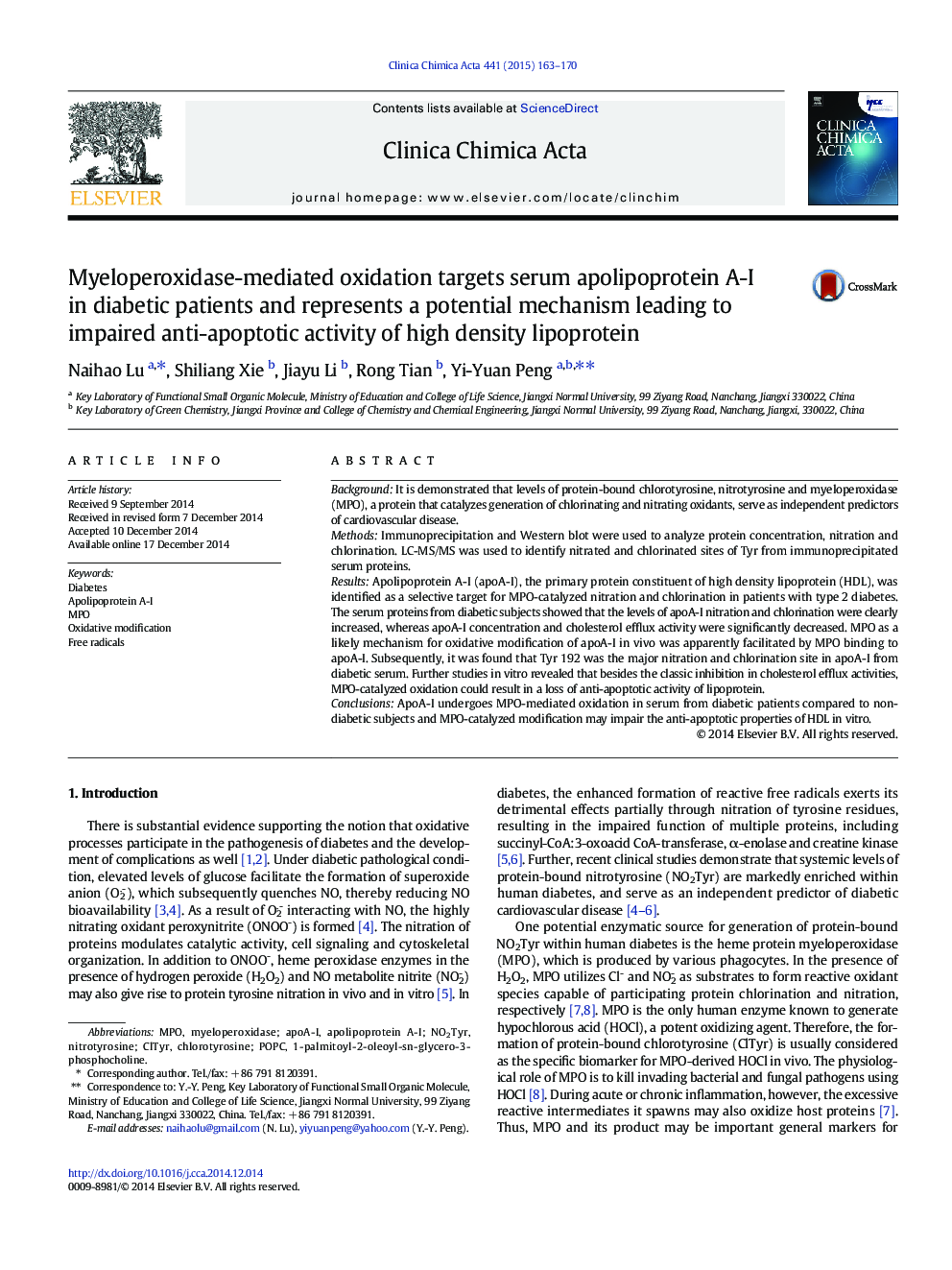| کد مقاله | کد نشریه | سال انتشار | مقاله انگلیسی | نسخه تمام متن |
|---|---|---|---|---|
| 1965358 | 1538657 | 2015 | 8 صفحه PDF | دانلود رایگان |

• The levels of apoA-I nitration and chlorination are increased in diabetic serum.
• ApoA-I concentration and apoA-I-mediated cholesterol efflux activity are decreased in diabetes.
• Tyr 192 is the major nitration and chlorination site in apoA-I from diabetic serum.
• MPO-catalyzed oxidation results in a loss of anti-apoptotic function of HDL.
BackgroundIt is demonstrated that levels of protein-bound chlorotyrosine, nitrotyrosine and myeloperoxidase (MPO), a protein that catalyzes generation of chlorinating and nitrating oxidants, serve as independent predictors of cardiovascular disease.MethodsImmunoprecipitation and Western blot were used to analyze protein concentration, nitration and chlorination. LC-MS/MS was used to identify nitrated and chlorinated sites of Tyr from immunoprecipitated serum proteins.ResultsApolipoprotein A-I (apoA-I), the primary protein constituent of high density lipoprotein (HDL), was identified as a selective target for MPO-catalyzed nitration and chlorination in patients with type 2 diabetes. The serum proteins from diabetic subjects showed that the levels of apoA-I nitration and chlorination were clearly increased, whereas apoA-I concentration and cholesterol efflux activity were significantly decreased. MPO as a likely mechanism for oxidative modification of apoA-I in vivo was apparently facilitated by MPO binding to apoA-I. Subsequently, it was found that Tyr 192 was the major nitration and chlorination site in apoA-I from diabetic serum. Further studies in vitro revealed that besides the classic inhibition in cholesterol efflux activities, MPO-catalyzed oxidation could result in a loss of anti-apoptotic activity of lipoprotein.ConclusionsApoA-I undergoes MPO-mediated oxidation in serum from diabetic patients compared to non-diabetic subjects and MPO-catalyzed modification may impair the anti-apoptotic properties of HDL in vitro.
Journal: Clinica Chimica Acta - Volume 441, 20 February 2015, Pages 163–170